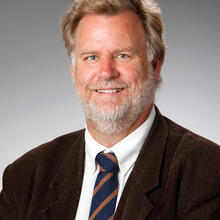1 Thessalonians is the earliest letter of Paul the Apostle –of which we are aware! – and so the earliest written document of the Church. Last Sunday’s second reading began with the short salutation from Paul, Silvanus and Timothy to the Church in Thessalonica, ending with the simple grace (1:1). The reading then continued with the opening of Paul’s Thanksgiving, in which he spoke of his Thanks and Prayers for the Thessalonians, offered especially when he considered "their work of faith and labor of love and steadfastness of hope in our Lord Jesus Christ" (1:3). These three "theological virtues" will appear elsewhere in this letter (5:8) and in Paul’s letters in general (1 Corinthians 13:13; cf. Romans 5:1-5; Galatians 5:5-6), to say nothing of the developing Christian tradition, but at the beginning of Thessalonians they emerge, I would argue, from Paul’s experiences in their midst and what he has heard from his co-workers. That is, the theological virtues are not theoretical, but concrete and grounded in the life of the Thessalonian Christians. This Sunday’s reading resumes and completes the Thanksgiving of 1 Thessalonians and makes sense of the "grounded" Thessalonians. Paul praises the Thessalonians for becoming "imitators of us and of the Lord" (1:6). The concept of mimêsis, of imitation, has a long history in classical Greek thought, though the extent of the influence of the classical conception on Paul is a disputed question. Whatever the case, in Paul’s letters mimêsis is something in which Paul offers himself as a model, encouraging and exhorting his Churches to become imitators of him. In 1 Thessalonians, however, Paul acknowledges that the Thessalonians have through their perseverance in suffering already become imitators of "us," probably Paul and his co-workers Timothy and Silvanus, and the Lord. It is their steadfastness in suffering, combined with "joy from the Holy Spirit" (1:6), that has made them models for other Christians. Their perseverance and steadfastness in the face of suffering is particularly impressive, because Paul had to leave Thessalonica quickly, due to his own persecution in the city. Not only were the Thessalonians left to face persecution without their mentor and model, they were Gentile converts, with little knowledge, I would suggest, of the Scriptures or the life of Christ beyond what Paul had offered to them before he was chased out of town. What they did have was the experience of the Holy Spirit (1:5) and the hope of Jesus’ return (1:10). It was clearly enough. John W. Martens
"You Became Imitators of Us and of the Lord"
Show Comments (
)
Comments are automatically closed two weeks after an article's initial publication. See our comments policy for more.
The latest from america
The U.S.C.C.B. said it would not renew its cooperative agreements with the federal government related to children’s services and refugee support after its longstanding partnerships with the government in those areas became “untenable.”
To Andriy Zelinskyy, S.J., “Victory is creating a society where a person feels their freedom and dignity, and where a human being remains a human being.”
Returning to “Preach” for the second time this Lent, Professor Johnson joins host Ricardo da Silva, S.J., to discuss the Passion narratives in both Luke and John, heard during the principal liturgies of Holy Week.
An Oklahoma man charged Friday with first-degree murder in the fatal shooting of a Catholic priest wrote letters to a newspaper railing against the Catholic Church reforms of Vatican II and referring to a “strange new version of ‘Catholicism.’”







